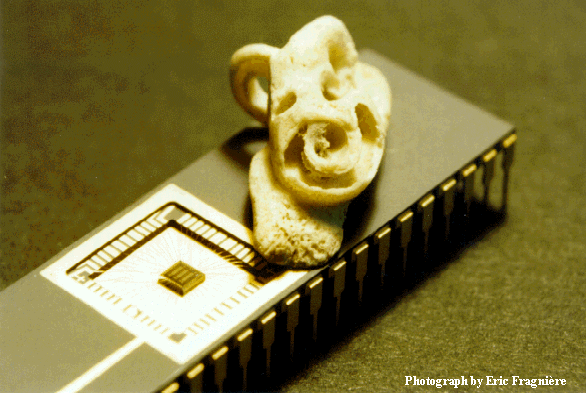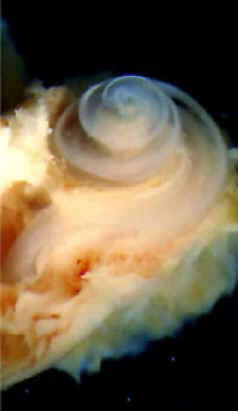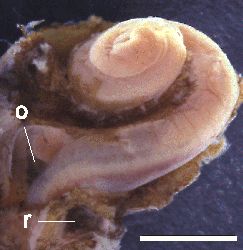
김형재의 청능재활 : 스타키보청기 분당난청센터
'청각학 이야기 > 인공와우(달팽이관)' 카테고리의 다른 글
| [이미지] 인공와우 작동원리 및 착용모습 (0) | 2008.03.07 |
|---|---|
| [동영상] 인공와우(Cochlear Implant) 수술 (0) | 2008.03.05 |
| [사진] 인공와우 시술장면 (0) | 2008.03.04 |
| 달팽이관(와우) 실제 사진 (0) | 2008.03.03 |
| 달팽이관(와우) 실제 사진 (0) | 2008.03.02 |

김형재의 청능재활 : 스타키보청기 분당난청센터
| [이미지] 인공와우 작동원리 및 착용모습 (0) | 2008.03.07 |
|---|---|
| [동영상] 인공와우(Cochlear Implant) 수술 (0) | 2008.03.05 |
| [사진] 인공와우 시술장면 (0) | 2008.03.04 |
| 달팽이관(와우) 실제 사진 (0) | 2008.03.03 |
| 달팽이관(와우) 실제 사진 (0) | 2008.03.02 |

달팽이관(와우) 실제 사진 : 김형재의 청능재활
동물들의 와우는 직선형임에 비해 인간의 와우는 나선형으로 되어 있어 상대적으로 넓은 범위의 주파수의 소리를 들을 수 있습니다.
The cochlea is the organ inside your inner ear that ultimately transforms the vibrations of sound into nerve signals, which are sent to the brain and thus "heard". Essentially, it is a spiral-shaped, hollow bone, filled with fluid and lined with hairs. The coiled shape of your cochlea allows you to hear a wider range of frequencies than animals with a straight cochlea.
Different frequency waves peak at different positions along the tube. Hair cells sitting on the basilar membrane sense these motions by bending against the membrane and produce electrical signals that feed into the auditory nerve. Hair cells near the large end of the cochlea detect high-pitched sounds, such as the notes of a piccolo, while those at the narrow end of the tube detect lower frequency sounds, like a the oompah of a tuba.
Only mammals have developed the coiled shape; the cochlea of birds and reptiles is straight and less efficient.
Image via the Ethnomusic Department at UCLA
| [이미지] 인공와우 작동원리 및 착용모습 (0) | 2008.03.07 |
|---|---|
| [동영상] 인공와우(Cochlear Implant) 수술 (0) | 2008.03.05 |
| [사진] 인공와우 시술장면 (0) | 2008.03.04 |
| 달팽이관(와우) 실제 사진 (0) | 2008.03.03 |
| 달팽이관(와우) 실제 사진 (0) | 2008.03.02 |

실제 모양의 달팽이관입니다. 스타키보청기 분당난청센터
| [이미지] 인공와우 작동원리 및 착용모습 (0) | 2008.03.07 |
|---|---|
| [동영상] 인공와우(Cochlear Implant) 수술 (0) | 2008.03.05 |
| [사진] 인공와우 시술장면 (0) | 2008.03.04 |
| 달팽이관(와우) 실제 사진 (0) | 2008.03.03 |
| 달팽이관(와우) 실제 사진 (0) | 2008.03.03 |